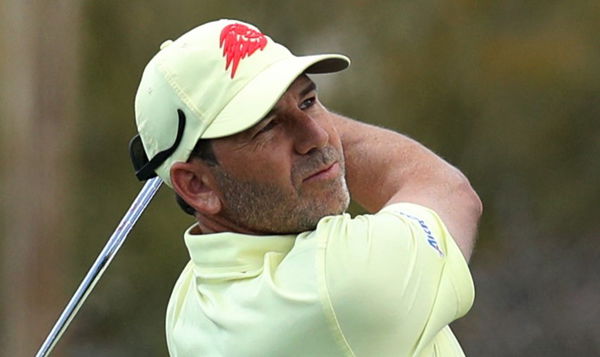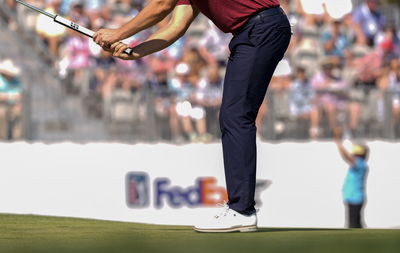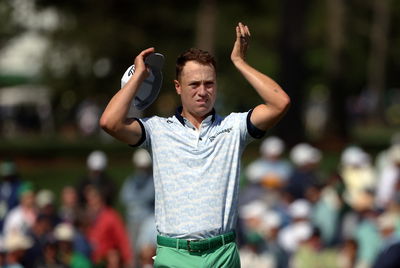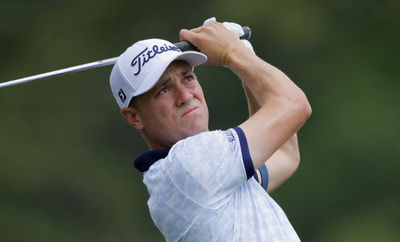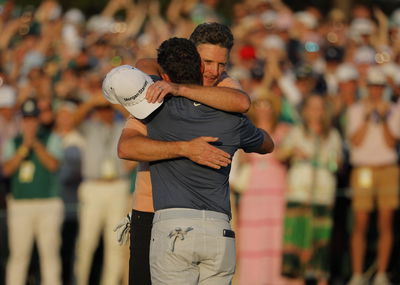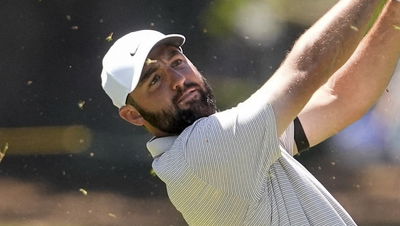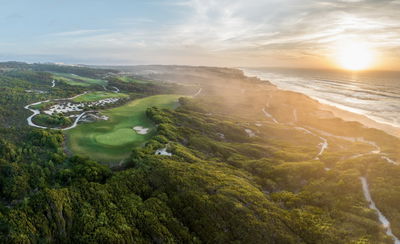The 1991 Ryder Cup remembered 30 years on after the War on the Shore
"They were hostile towards the European side, booing when our players holed a putt and cheering when we missed. They were overly nationalistic and partisan."
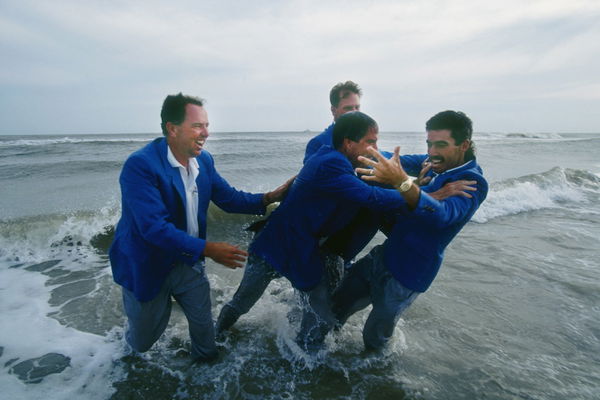
We are now approaching 30 years since the infamous 1991 Ryder Cup in Kiawah Island.
It was famously dubbed the War on the Shore and will forever be remembered for that missed par putt by German Bernhard Langer.
The tournament featured over-zealous spectators, off-the-course tension, accusations of gamesmanship, and hostility between the Americans and Europeans.
In interviews with Golf Care, Bernard Gallacher, journalist Renton Laidlaw and Sam Torrance give their first-hand recollections and opinions of what went on.
GolfMagic decided to pick out some of their most interesting responses.
For @RyderCupUSA, there was only one way to celebrate the 1991 Ryder Cup win at Kiawah Island #tbt pic.twitter.com/cYcFRM5hqA
— Ryder Cup (@rydercup) July 29, 2021
Bernard Gallacher, the Europe team captain
What can you remember about the events that preceded the 1991 Ryder Cup?
The 1991 Ryder Cup marked the aftermath of America’s triumph in the Gulf War, and the Americans seemed to take this sense of nationalism into the event.
During the opening ceremony, President Bush appeared on television saying he was hoping for an American victory, which you just don’t say at a Ryder Cup. Then-Vice President Dan Quayle also came to the matches. It was undignified in many ways.
The Americans are always expected to win the Ryder Cups – they can’t get accustomed to the idea that we win and they lose. That’s why they did everything they could to win in 1991. There was a certain amount of desperation as the Americans hadn’t won the Ryder Cup since 1983, and their players seemed worked up.
We had no idea, for instance, that some players would come out with battle-fatigue baseball hats – it was obvious they were trying to generate a hostile atmosphere.
Various other things happened before the tournament, which didn’t sit well with me. We were staying at an apartment and the maids servicing the rooms gave out the players’ room numbers to an all-night disc jockey, who was ringing our players during the night. They called this segment ‘wake the enemy’.
Then there was the gala dinner in Charleston on the Wednesday. Three of the American team limos were involved in a collision on the way to the dinner, and Steve Pate got hurt. I thought it was just a minor bump, and, personally, I thought the Americans made a lot more of that than they needed to. And that, of course, led to the David Gilford situation.
During the dinner itself, this film of the Ryder Cup came on, and it didn’t show any British or Irish participation at the Ryder Cup – it was all about the Americans. Seve Ballesteros and Ken Schofield, who was the Chief Executive of the European Tour at the time, were incandescent with rage, considering we’d won in 1985 and 1987 and retained the Ryder Cup in 1989. I felt very much the same; I thought it was very unsporting. That got the week off to a poor start.
What did you make of the role the spectators played at Kiawah Island?
The Americans got the spectators roused up; there’s no other way of putting it.
I played in eight Ryder Cups, and this was the first one where the crowd got really involved in the match. They were hostile towards the European side, booing when our players holed a putt and cheering when we missed. They were overly nationalistic and partisan.
I’m not sure if it affected the players, but it meant there was an ill feeling, and the tournament was played in a bad spirit. It was getting out of control, to be honest.
What are your first-hand memories of what happened on the course?
Some players were accusing other players of gamesmanship. During the foursomes match, Seve developed a small cough throughout the match and his opponent Raymond Floyd became unhappy, to put it kindly, that Seve was doing that. Seve and (José María) Olazábal also accused Paul Azinger of illegally changing the golf ball at the ninth in the four-ball match because he wanted to hit the third shot in with a softer ball to get more spin.
We all go into these rule meetings before the match starts, so we’re all on the same page regarding the rules. It was the first Ryder Cup where you weren’t allowed to change your ball in a foursomes match, so whoever nominates the ball on the first tee had to stick with that ball throughout.
I was called to the tenth tee before they hit off, and Olazábal told me they’d changed the ball and I asked the referee to explain the ruling to the Americans again. The referee explained that you must play the same ball that you nominated at the first tee throughout the match. Any rules dispute must be brought to the attention of the referee before you hit off at the next tee.
Olazábal said he wasn’t hitting off until the referee told them the rule and that he was claiming the hole. Azinger said he didn’t change his ball at the ninth, and when he realised that the Spaniards couldn’t claim the hole at the seventh because they’d played the next two holes, he said he changed the ball at the seventh. I said: ‘If you didn’t know the rule at the seventh, how come you know the rule at the ninth?’. When the referee asked Azinger if he changed the ball, he said they hadn’t. Seve and Olazábal beat them 2 and 1 on the back nine anyway, and I think the Americans were upset that they’d been caught out.
There were also suggestions from the European supporters that Hale Irwin’s ball was thrown back into play after he pulled his tee shot at the 18th in the defining match against Bernhard Langer. I thought that the ball was in the heavy rough, but when I came up, it was in the semi-rough, not where I thought it should have been. I was very surprised to see that. We accepted it at the time because we couldn’t prove it, but there was a suspicion, and I’ve been told often that the ball was thrown back by a spectator.
1991 Ryder Cup which was played on the brutal Kiawah Island.
One of the best fourball matches to be played. Seve & Olli vs Payne & Fred.
José María Olazábal
17th Hole
Kiawah Island
1991 Ryder Cup
Match Halved#rydercup #warontheshore #europe #america #greatestshots pic.twitter.com/jGht1hrNZy— Golf’s Greatest Shots (@GolfGreatest) June 15, 2020
How do you reflect on the events at Kiawah Island, and how do you think they shaped the Ryder Cup?
The 1991 Ryder Cup wasn’t played in the spirit of the tournament. It was hostile and toxic. In the Ryder Cups I played in, there was no hostility or acrimony – it was friendly and competitive. There were always a few technicalities and disputes along the way, but nothing too serious.
The players can usually settle disputes themselves, and if they can’t, the referee comes in. But this whole tournament felt different – it was difficult. I found it tough as captain, more and more so as the week went on.
As a captain, you try and keep most of the big issues away from the players. Some of the players like Mark James have said they didn’t think there was much going on in 1991, but if the players are saying that, it’s a good thing. It shows I’ve done my job as captain by keeping a lot of the controversy away from the players.
This was the first tournament that changed the paradigm for a few Ryder Cups, right up until 1999 at The Country Club in Brookline when Mark James was the captain. It boiled over again then with all of the partisan stuff that was going on – the Americans prematurely spilled onto the green, even though Olazábal still had a putt to keep Europe in it. I felt sorry for Mark in that moment.
There’s no doubt that 1991 was the precursor to these events. It started there, and eight years later, it was completely over the top.
RELATED: FIVE REASONS WHY THE US HAVE DOMINATED IN WISCONSIN
Renton Laidlaw, journalist and former golf correspondent for the BBC
Do you remember much about the build-up to Kiawah Island, and did you get any sense going into the tournament that things might get hostile or spill over?
I didn’t feel there was any sense of animosity going into the tournament. The Americans hadn’t won the Ryder Cup in eight years, so I suppose we felt that they’d be keener than ever to win the match. But I didn’t think there would be any nastiness because of the Ryder Cup’s history and what it represented.
When Samuel Ryder gave the cup to the PGA in Britain, he gave it to cement the friendship between the British and the Americans – it was a friendship cup. So, we didn’t anticipate that there would be any problems over in Kiawah Island, but of course, things got out of hand.
What do you remember of the atmosphere and how the American spectators were towards the European contingent?
The group of people watching the golf were pretty antagonistic. They were very pro-American because their team hadn’t won the Ryder Cup for a long time.
They kicked Mark James’ ball into the rough, and there was a strong suggestion that Hale Irwin’s ball had been thrown back in. That’s just not golf.
There was an undercurrent of anxiety hostility towards the Europeans. The Americans thought they might not win again, and that would have been appalling, especially on home soil.
Ryder Cups are usually played in the best spirit, but this Ryder Cup wasn’t played in the best spirit at all. That was a disappointment to everybody, not to least to Bernard who already had the David Gilford situation to contend with.
What can you remember of the moment Bernhard Langer missed a six-foot par putt for victory, and how did it feel that it was Langer of all people who missed the putt?
My recollection is there were two spike marks on the way to the hole, and you couldn’t tap down spike marks at that point. So, Langer knew he wouldn’t have a completely smooth run to the hole.
He was such a reliable member of the European Ryder Cup team, but maybe he pushed it a bit too much or didn’t quite have the line, despite the conversation he had with his caddy. I suppose only he can tell you that.
It was a heartbreaking moment for him. It was a hole-able putt, and in normal circumstances, he would’ve holed it. But the spike marks created that added element of doubt, and it clearly affected Langer, who was presumably aware of what was going on elsewhere on the course.
The 1991 Ryder Cup at Kiawah Island came down to one putt. BUT was remembered as one of the controversial matches in history.
Fred Couples, @montgomeriefdn and Hale Irwin tell us their true thoughts.
: https://t.co/mR6Qs78ucs pic.twitter.com/O0HttLLlQ8
— National Club Golfer (@NCG_com) August 28, 2018
Sam Torrance, part of the Europe Ryder Cup team in 1991
How would you describe Kiawah Island from your perspective?
It was exciting. The American spectators obviously weren’t shouting for us, but I didn’t feel that there was anything particularly untoward. I thought the spectators were great – they were backing their team just like the European supporters would at the Belfry or in France. I didn’t have a problem with that side of things.
There was the other stuff going on off the course, like the phone calls to the players’ rooms which were a little bit tricky, let’s put it that way. I wasn’t one of the players who was called – luckily for the disc jockey, they never got through to me, otherwise there would certainly have been a few bleeps on their show!
The only reason it’s called the War on the Shore is because Corey Pavin – who’s a dear friend of mine – wore the camouflage hat. He realised it was a mistake, and he didn’t do it to antagonise anyone. He was just being a real American. It was taken out of context, in my opinion.
What do you recall of the dispute involving Azinger and Olazábal?
There was nothing that could be done about it because they’d walked off the greens – they needed to bring it up on the seventh. But despite the fact they were losing when the issue was brought up, Seve and Ollie were just magnificent on the back nine and showed great resilience. That calmed that down – that was one form of attack gone.
We obviously weren’t happy that the ball was changed – it was an elementary mistake. Whether or not it was done on purpose, we’ll never know.
How do you remember the Bernhard Langer moment?
I was stood ten yards away. I wouldn’t have put anyone else ahead of Bernhard for that putt – he was absolutely magnificent at Kiawah Island, and he’d holed the previous three putts of a similar length to keep the match going.
We all felt for him when he missed the putt, but it’s just one of those things that can happen to anybody, even someone as brilliant as Bernhard.

